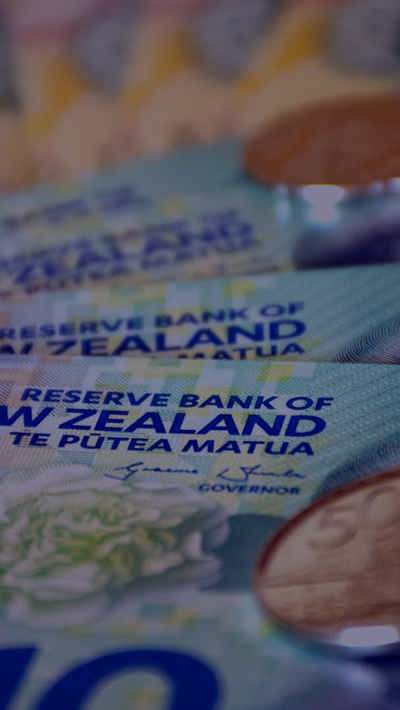Contents
Arguably the most important forecast in the 2020 Pre-election Economic and Fiscal Update (Prefu), and definitely the most significant for future generations, is that net core Crown debt will steadily increase over the term of the next government to hit 53.5% of GDP by 2023.
We look at the strategies on offer from Labour, the Greens, National and ACT to get the budget back to black. We have not attempted to list every policy, just those we regard as most significant and enough to give you a clear insight into the parties’ different priorities and preferences.
We have not included New Zealand First, even though it may once again be a party in government, because we expect that New Zealand First would do next time what it did this time – claim some policy trophies, score some big funding boosts for New Zealand First held Ministerial portfolios, and act as a brake on “bad ideas”.
We are taking an issues-based approach to our Election Series 2020, which necessarily involves some editorial content. The remaining areas we will cover are:
- the path to a low carbon economy, and
- how to build back better.
The election campaign has a while to roll yet so there will be policy announcements to come which we have not been able to capture here.
Getting the budget back into black
Debt target
| Labour | Greens | National | ACT |
| No debt targets |
Accepts Treasury’s Prefu forecasts which have debt at 48% of GDP by 2033/34 Also tracks a lower debt trajectory – to 45% of GDP – which assumes the $12.1b left in the COVID Fund is not drawn down |
Return to surplus by 2028 Core net Crown debt at 36% of GDP by 2033/34 1 Fund new transport infrastructure through increased crown entity borrowing (which would keep it off the Crown balance sheet) |
Return to surplus by 2024 by slashing $7.6b off spending and delivering tax cuts of $3.1b a year 2 |
Increase revenue
| Labour | Greens | National | ACT |
|
39c tax on incomes over $180,000 (estimated to raise $2.37b over the four year forecast period) Digital Services Tax, $254m (although Labour has not committed to proceeding with this) |
A 1% wealth tax for those with a net worth of more than $1m, 2% over $2m Two new top tax rates: |
No tax increases | No tax increases |
Cut spending
| Labour | Greens | National | ACT |
|
No spending cuts Labour’s campaign commitments are costed at $4.4b over four years It has also budgeted for new spending allowances of $2.6b in each of the next four budgets (compared to a Prefu allowance of $2.4b) |
No spending cuts |
Suspend payments to NZ Super Fund for four years Axe:
A slower expenditure growth track on core public services like health and education National’s fiscal plan has new spending allowances of $814m and $704m in the next two budgets (the Prefu allowance for each year is $2.4b and Labour has allowed $2.6b) |
Cuts of more than $7.6b by axing:
Reduce the size of the public service and cut top salaries 10% across the board Reduce welfare benefits |
Stimulus – supply side
| Labour | Greens | National | ACT |
|
Big boost to infrastructure investment Extend the small business cash flow scheme ($10,000 loan plus $1,800 per FTE) for another three years $75m fund to help small businesses to digitise and enable work from home Redirect the money which would have expanded Fees Free to years 2 and 3 of study to provide free apprenticeships and targeted vocational training 10% of quarantine capacity to be reserved for critical workers from overseas Continue recovery plans for the international education sector and tourism Aim for government departments to pay 95% of domestic invoices within 10 working days $200m Regional Strategic Partnership Fund |
Green Energy Plan to:
Support campaign to promote New Zealand made products Commit government agencies to source more locally |
Big boost to infrastructure investment Immediate deductions for new business investments up to $150,000 Double depreciation rates for investments over $150,000 in plant, equipment and machinery $10,000 tax incentive for each new full time job created, and $10,000 credit for unemployed people to set up their own business Raise the compulsory GST threshold to $75,000 $100m Tourism Accelerator fund Allow tertiary education providers to bring in foreign students under strict safety protocols 90 day trials for all businesses Public sector agencies to pay contractors within 7 days Relax immigration rules for investors and technology workers Postpone 2021 increase to the minimum wage |
90 day trials for all businesses Reduce minimum wage to $17.70 and freeze it for three years Remove all regulations that do not pass a cost-benefit analysis |
Stimulus – demand side
| Labour | Greens | National | ACT |
|
Increase the minimum wage to $20 an hour by 2021 Implement industry wide fair pay agreements in competitive industries Extend the living wage to all contracted public service workers $56m to increase Warmer Kiwi Homes subsidy for low income homes from 67% to 90% of cost |
A Guaranteed Minimum Income of $325 a week for students and people out of work “no matter what” A Universal Child Benefit for each child under 3 of $100 a week A simplified Family Support Credit of $190 for the 1st child and $120 a week for subsequent children Additional support for sole parents through a $110 a week top-up Reform ACC to provide support for everyone with a work-impairing health condition, at a minimum of 80% of the minimum wage Implement industry wide fair pay agreements Increase the minimum wage annually in line with the median wage |
16-month tax cut from 1 December, achieved by lifting the bottom two tax thresholds. Costed at $4.7b, paid for from the COVID Fund Maintain benefits at current rates |
Tax cuts of $3.1b – reducing the 30% rate to 17.5% and cutting GST to 10% for 12 months Allow the private sector to operate managed isolation facilities, including Airbnbs |
1 The initial forecast had net Crown debt at 35% of GDP by 2033/34 but this was based on Budget 2020 assumptions of government contributions to the NZ Superannuation Fund.
2 ACT’s surplus and cost savings assumptions also contained errors but had not been adjusted at the time of writing, although the alternative budget had been removed from the website.








































